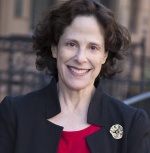One Difference between Katrina and Harvey: Availability of Information Resources

A Message from the President of Philanthropy New York, Ronna Brown, published originally in the New York PhilanthroPost Monthly September 2017 edition.
“Take from the past what is good and bring it into the present in order to make positive progress through the benevolent use of knowledge.”
– Best Practices in Disaster Grantmaking: Lessons from the Gulf Coast (PDF)
The images of desperate families and stories of systematic failure as Hurricane Harvey swept across the Houston area brought back for many the unforgettable images of Katrina. These last few days, Hurricane Irma is making headlines – even as it was still developing in the Atlantic.
All of this made me pull out the Best Practices publication that was produced by a funder collaborative built in NYC and dedicated to supporting the rebuild and resilience of the Gulf Coast in the years that followed Katrina and Rita (way back when Philanthropy New York was still NYRAG). Those practices – the ones heralded as “best” and the ones labelled as “to be avoided” ring as true today as they did then.
A lot has changed since 2005. We have added to the philanthropic knowledge and resources of how to handle the recovery. We now have important resources and knowledge in the Center for Disaster Philanthropy and The Disaster Philanthropy Playbook (produced by the Center and the Council of New Jersey Grantmakers in association with the United Philanthropy Forum), and the now annual report on philanthropic giving to disasters.
Philanthropy New York again did its part to build the knowledge base of the field after Hurricane Sandy when we joined with CDP, CNJG and the Foundation Center to produce “Philanthropy & Hurricane Sandy: A Report on the Foundation & Corporate Response.” In that report, we not only tallied the philanthropic dollars directed toward Sandy recovery, we assess how well funders has performed against the “dos & don’ts” of the 2008 best practices report.
We also now have a handful of foundations dedicated to supporting the sector’s knowledge and disaster preparation.
Still, local communicates, local nonprofits, and local government are always the front line heroes in those devastating first weeks. Philanthropy comes in later – filling gaps, supporting local groups, and ensuring the most vulnerable have support and help. That is a critical and appropriate role.
But, is it our only role? What would it take for philanthropy to actually help support the preparation and planning for those first hard days and weeks? Is it a role that every funder should embrace – at least as far as ensuring their own grantees have in place thoughtful plans in place for themselves and their communities? These are some of the questions that will be at the center of a late-October program led by CDP and the Foundation Center taking place at Philanthropy New York (to appear on our events calendar in the coming days).
We will have more storms and deadlier natural disasters -- that is simply an inescapable fact of climate change. We in philanthropy should help nonprofits and communities prepare and become more resilient. With the growing body of knowledge available to us, the philanthropic sector can better respond with a long-term approach.
